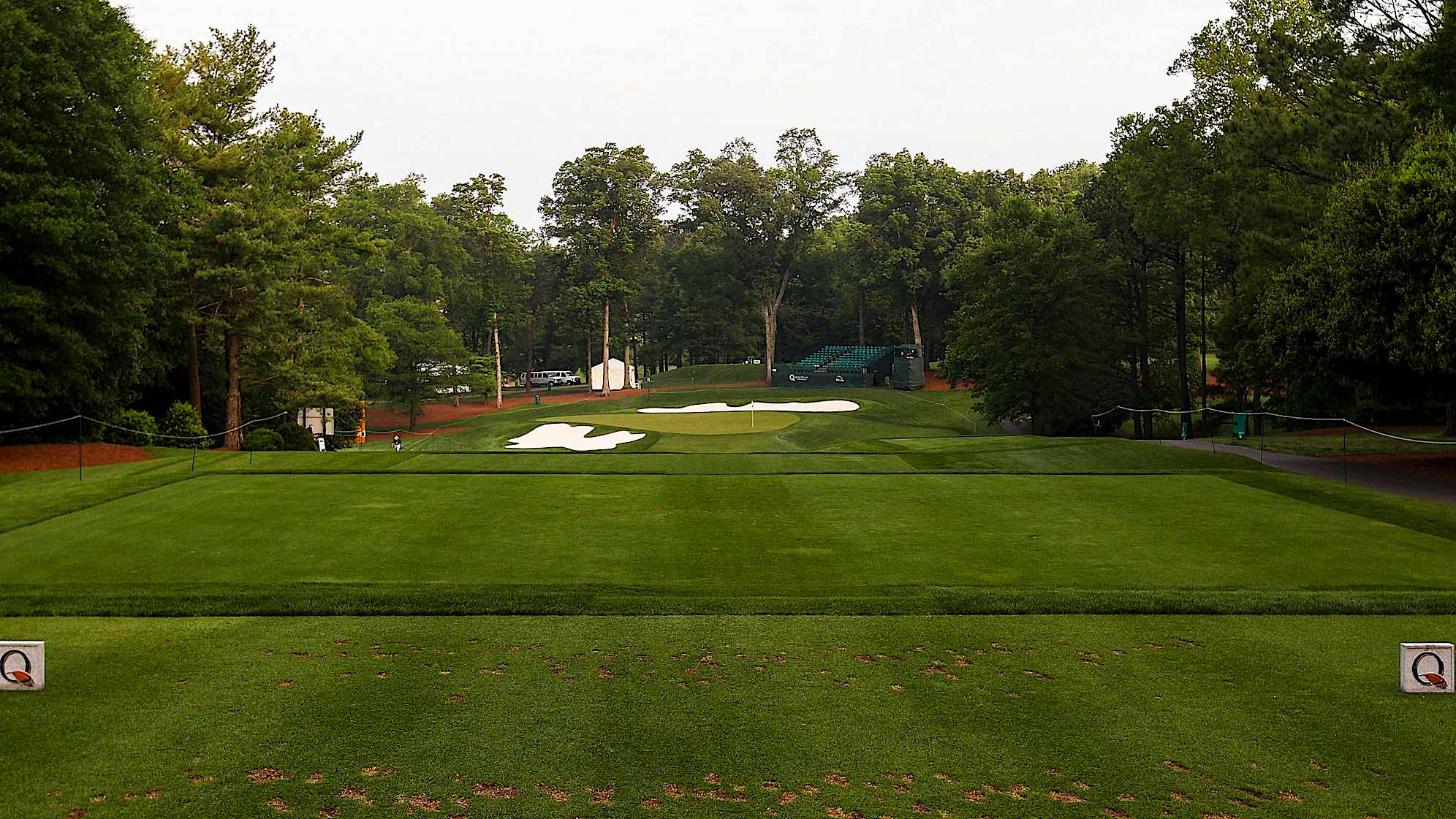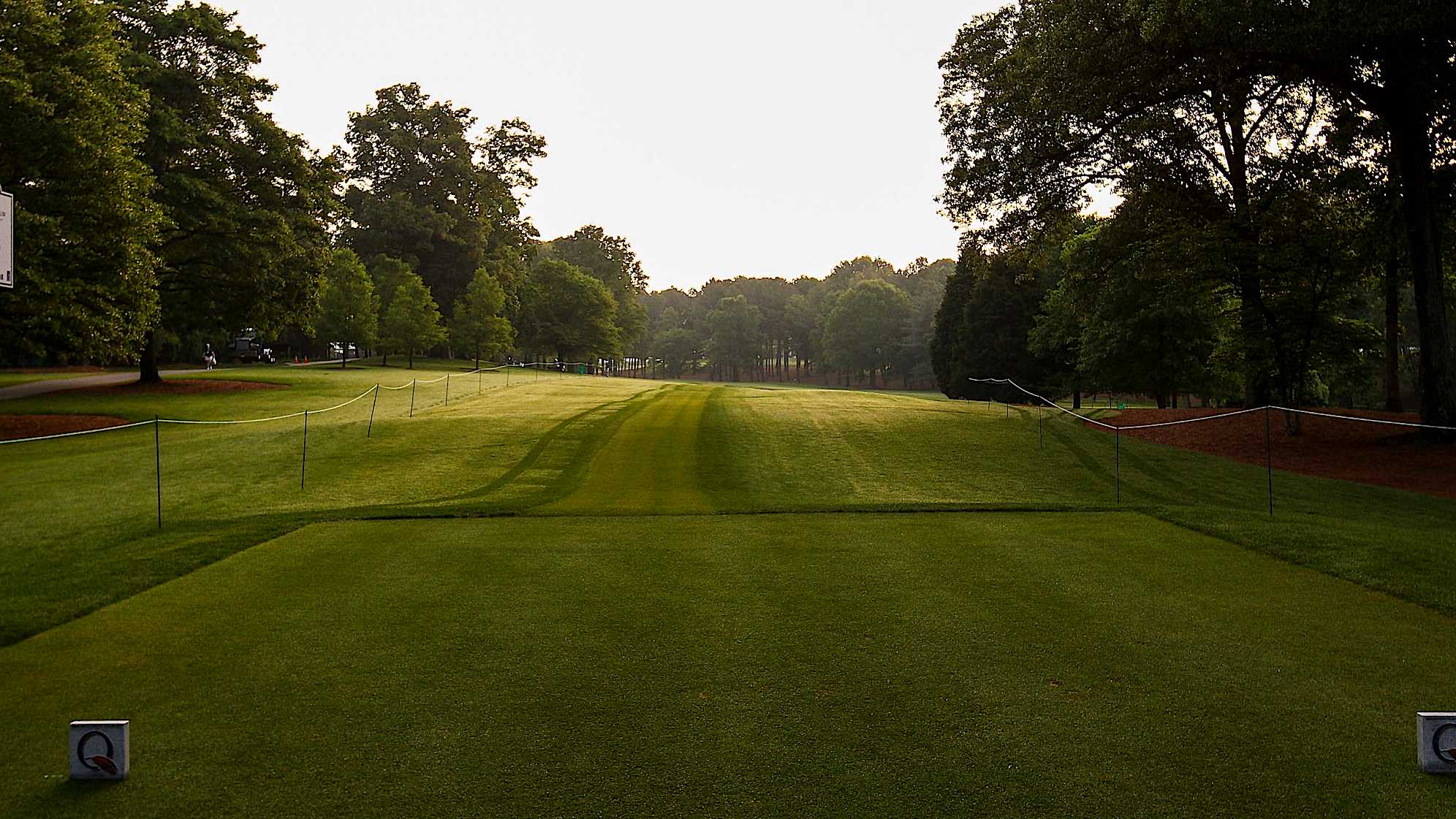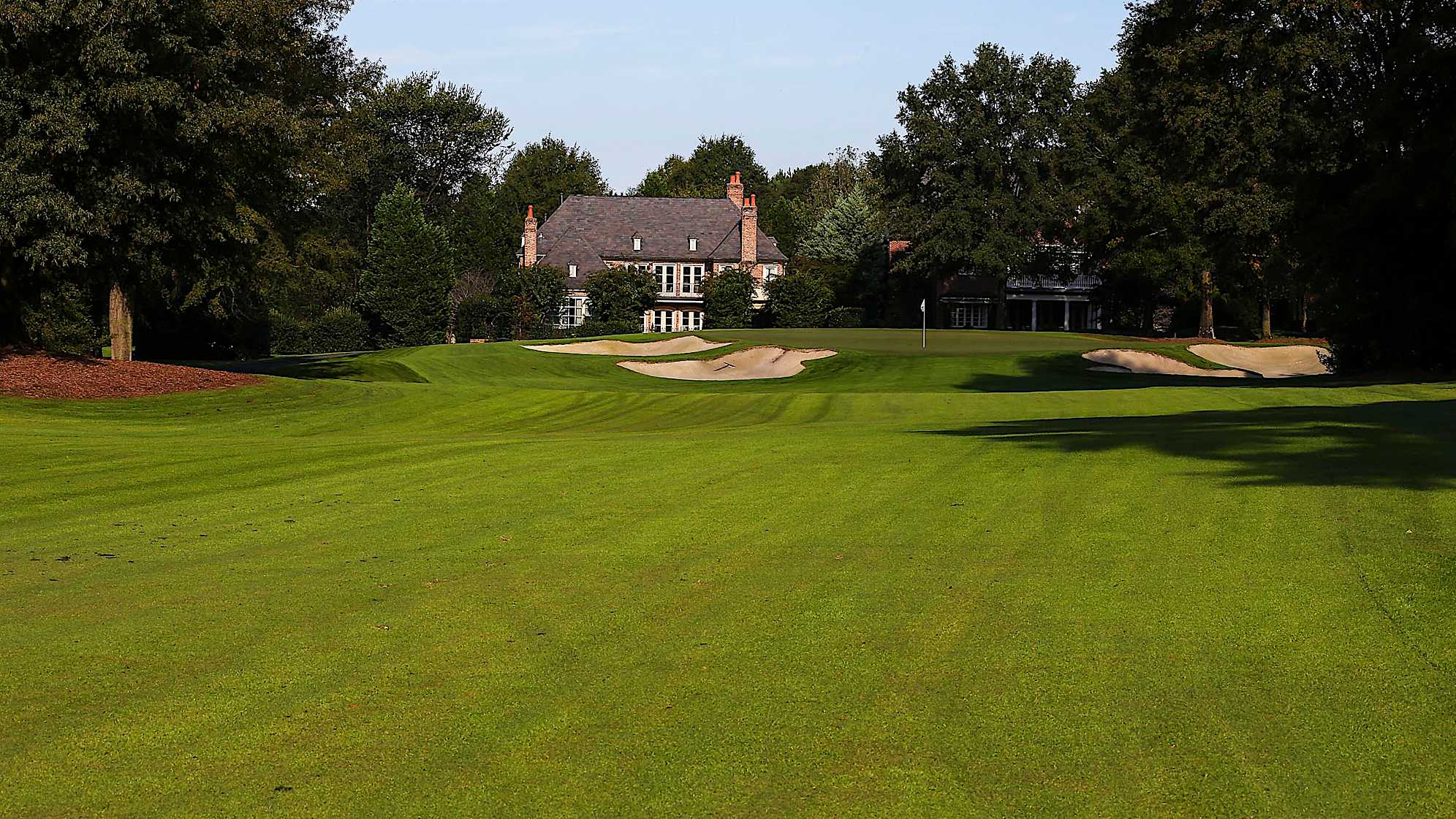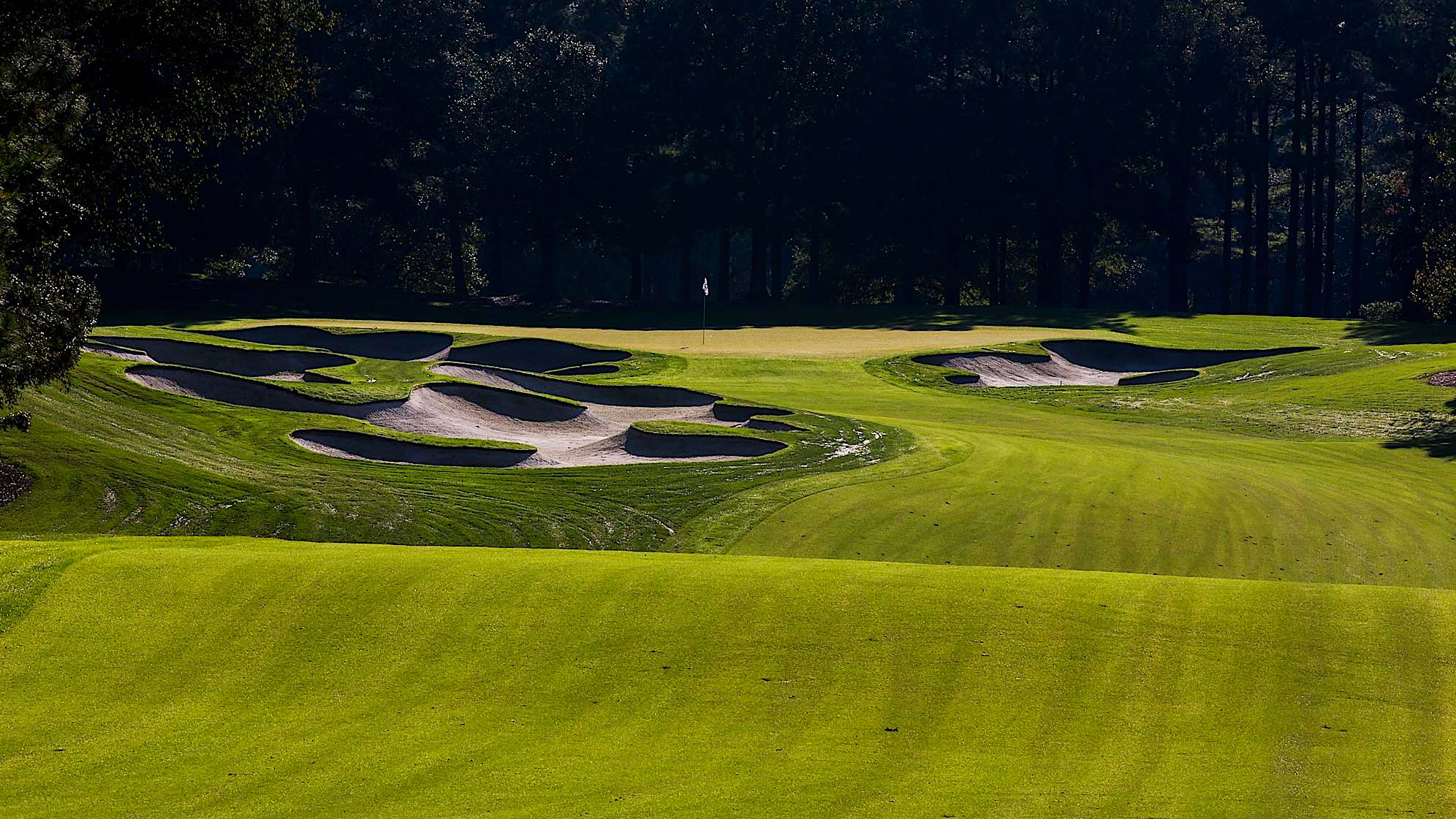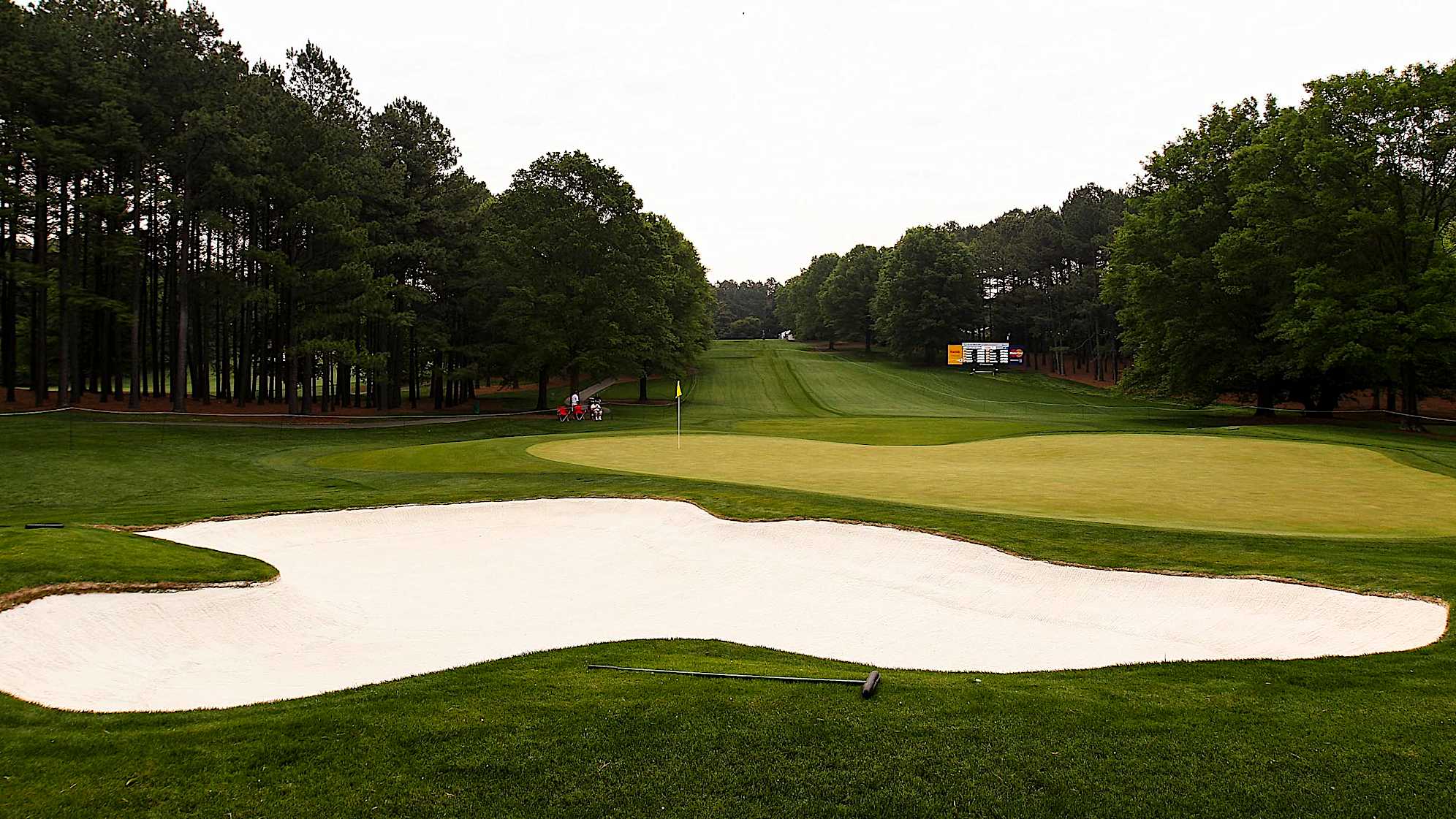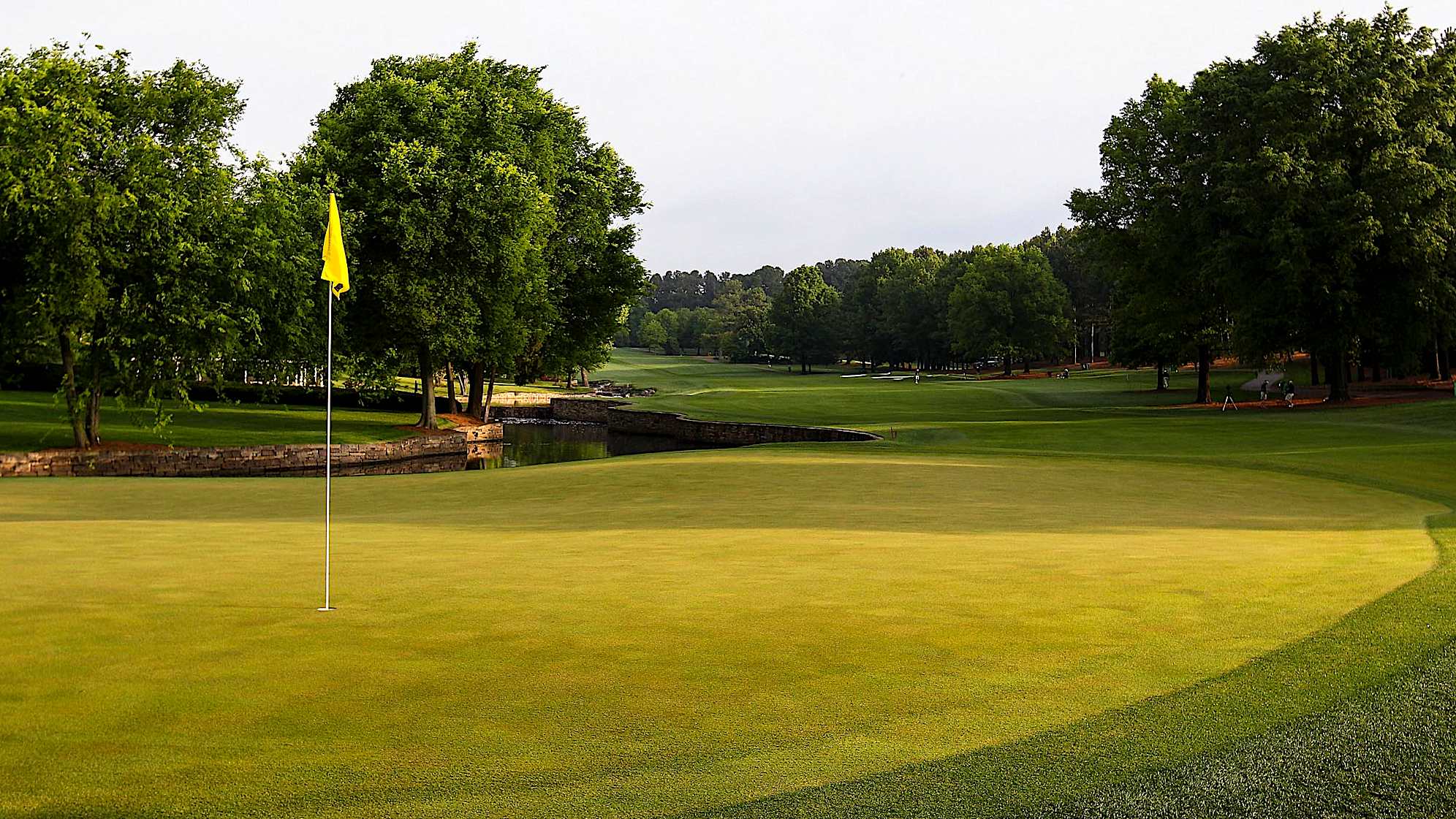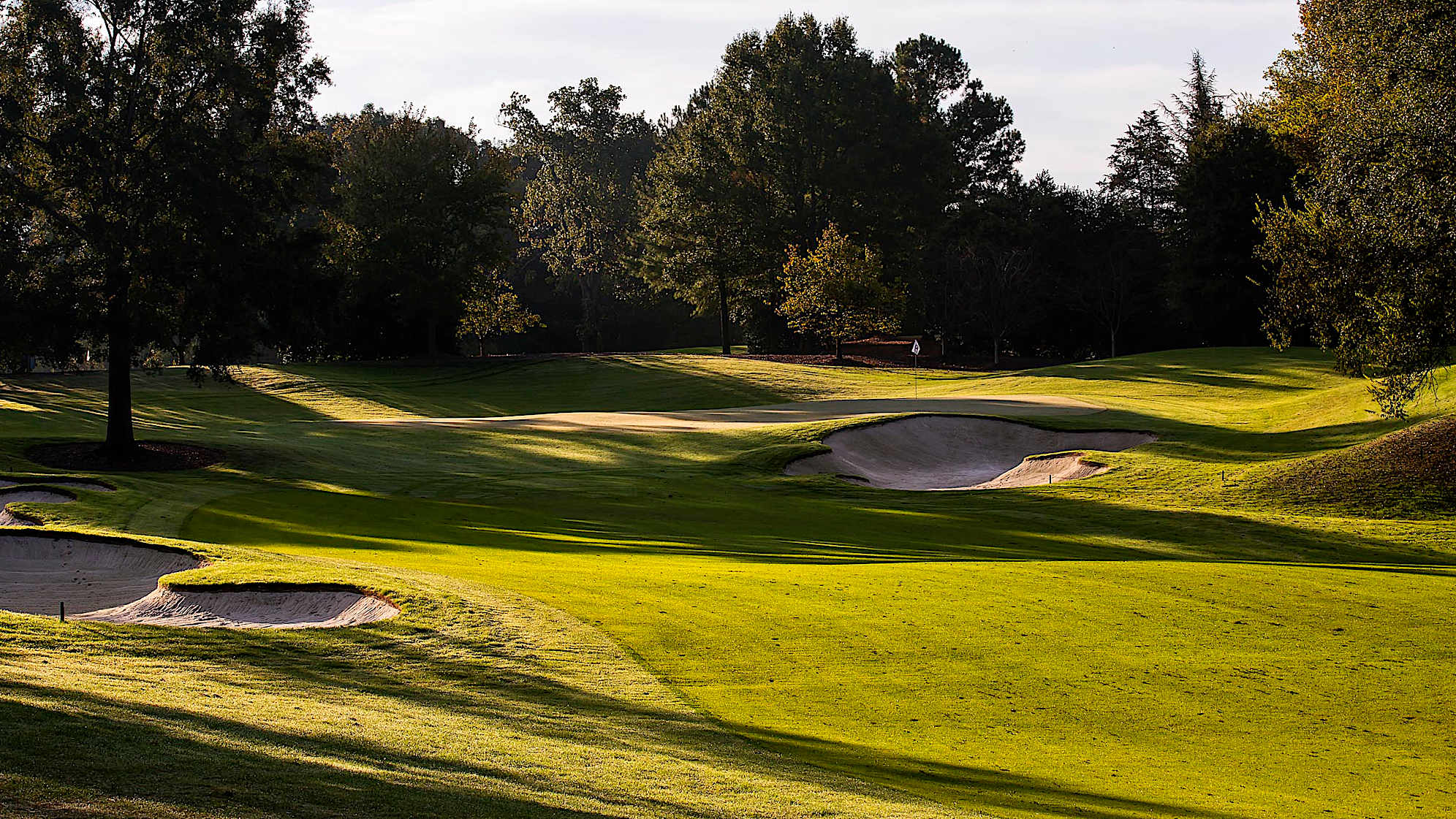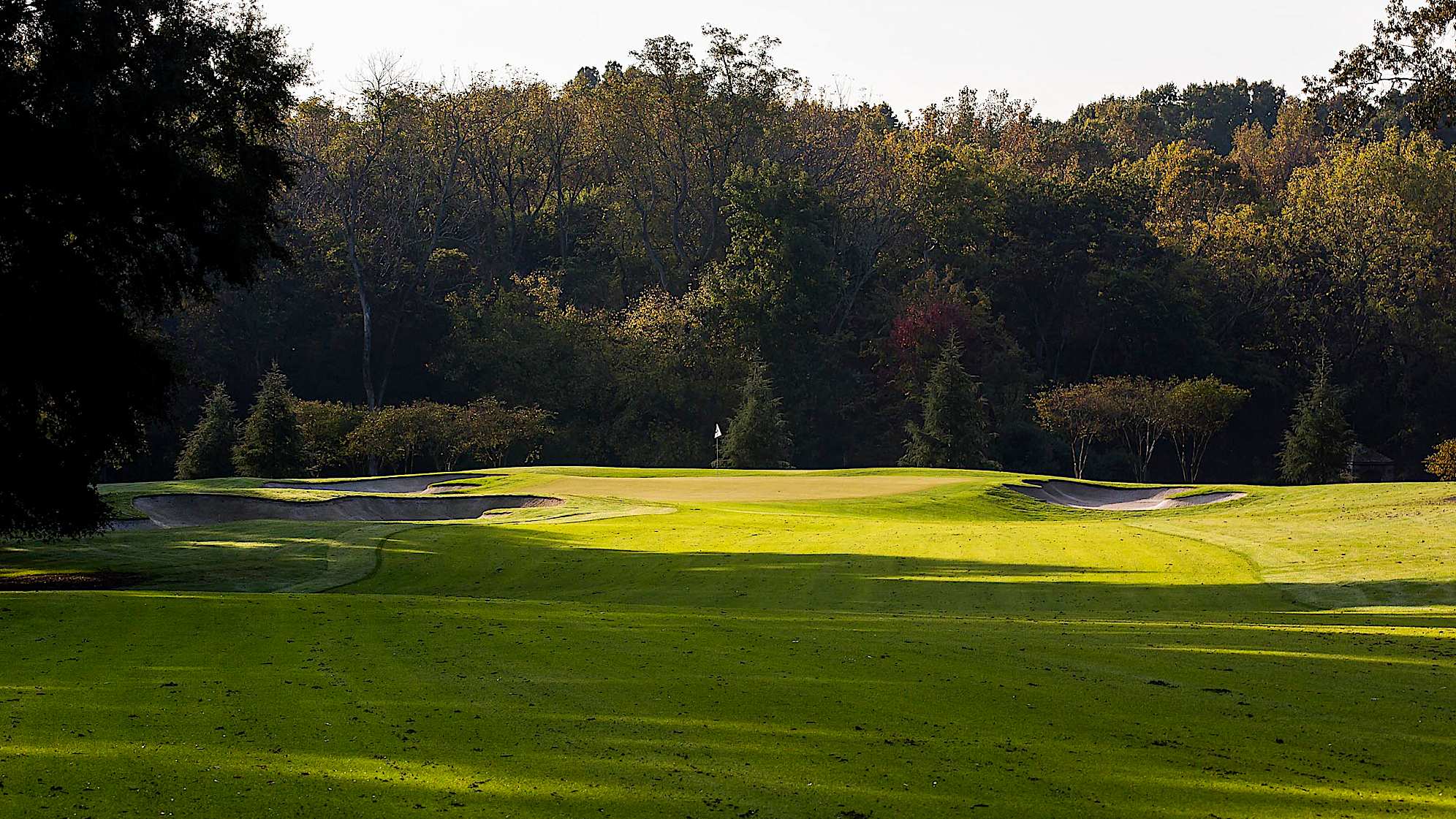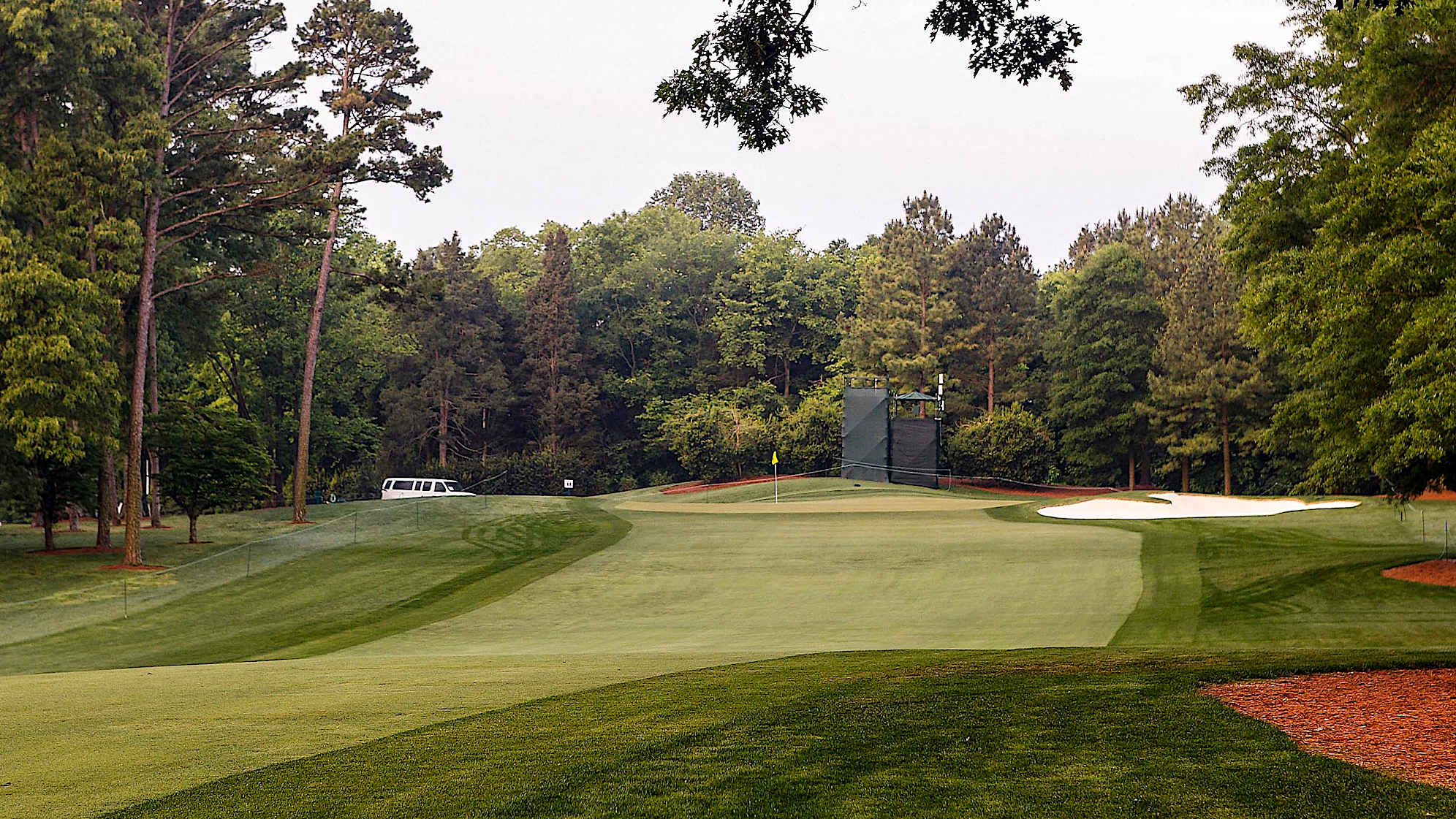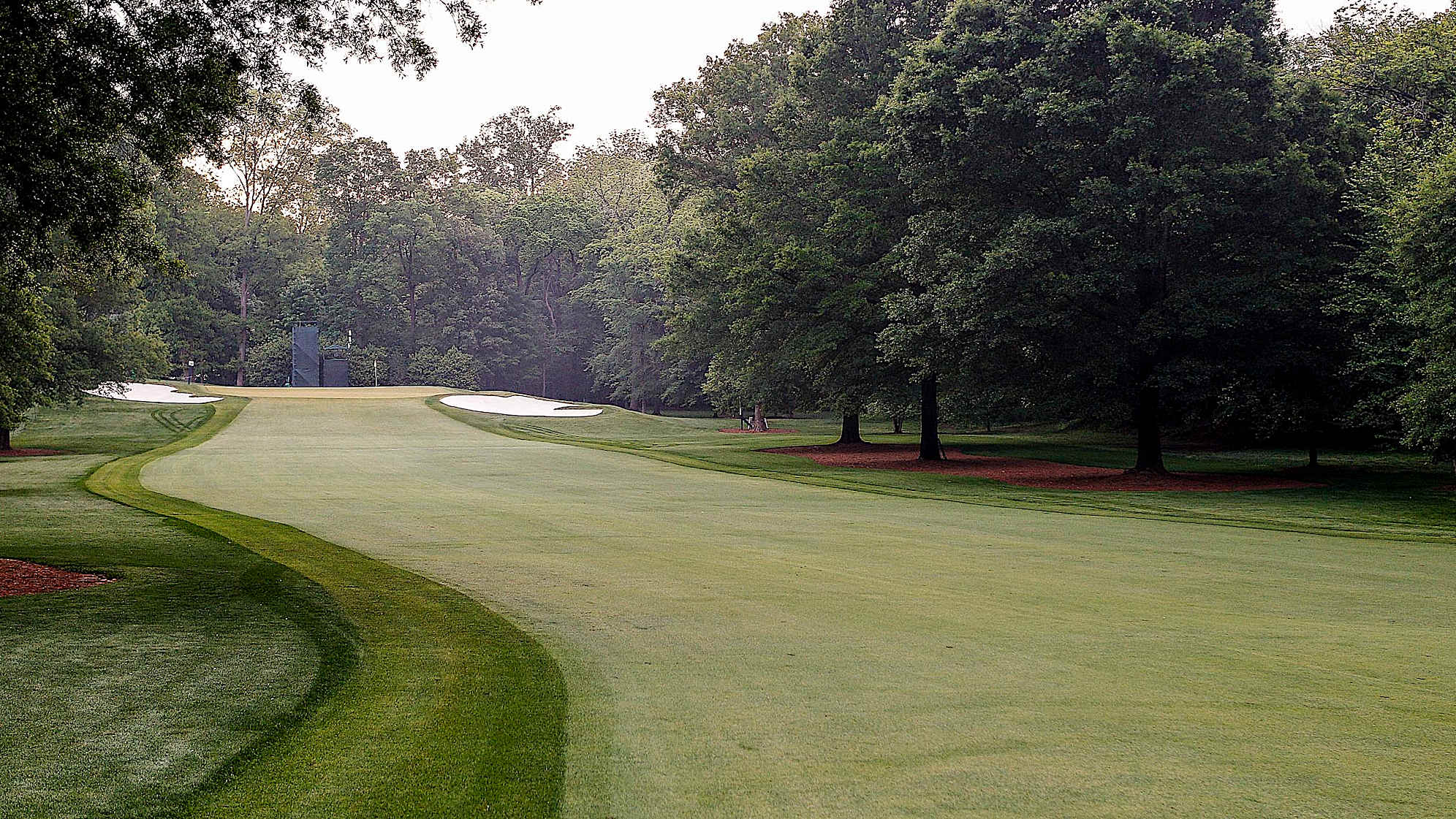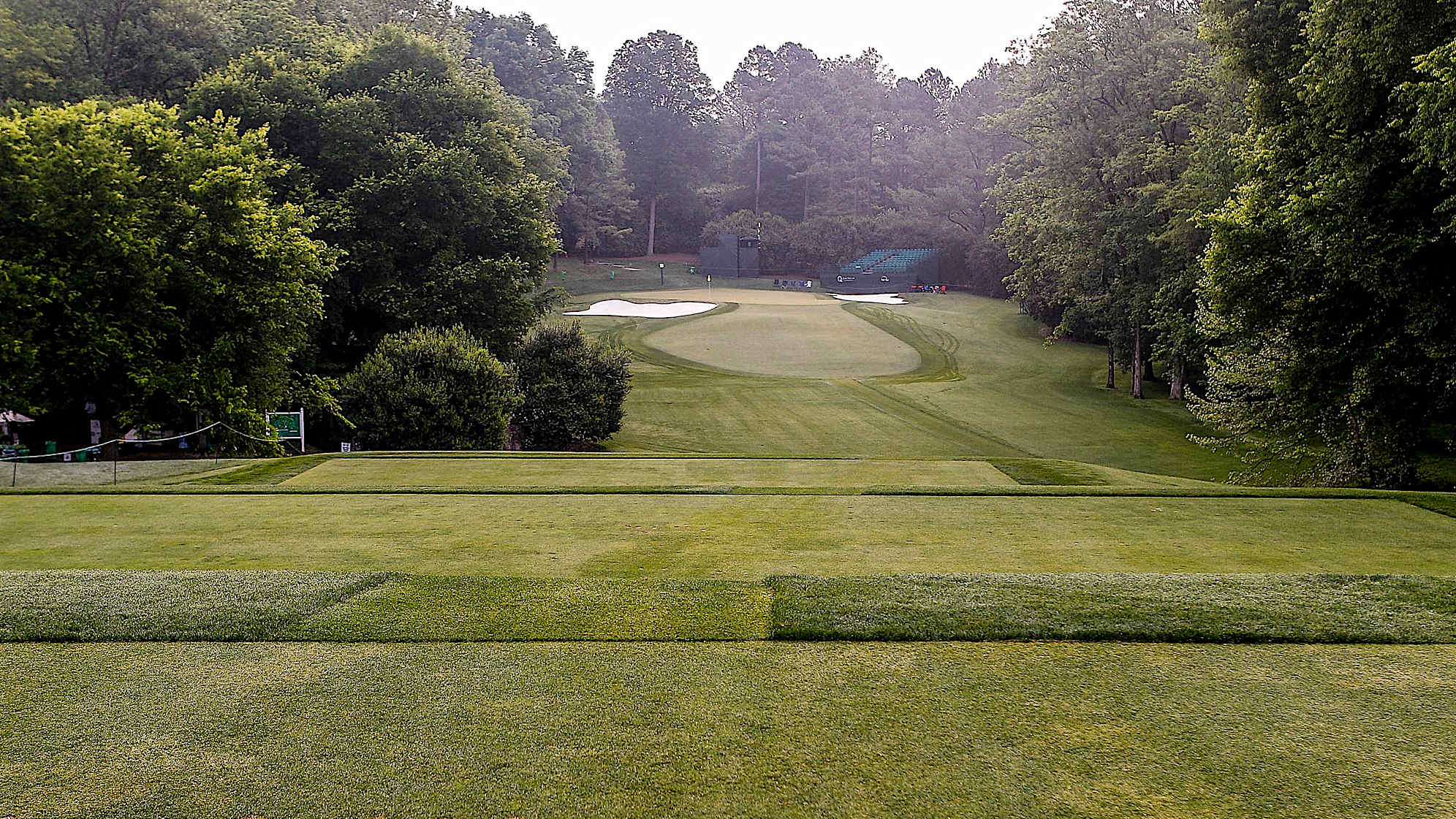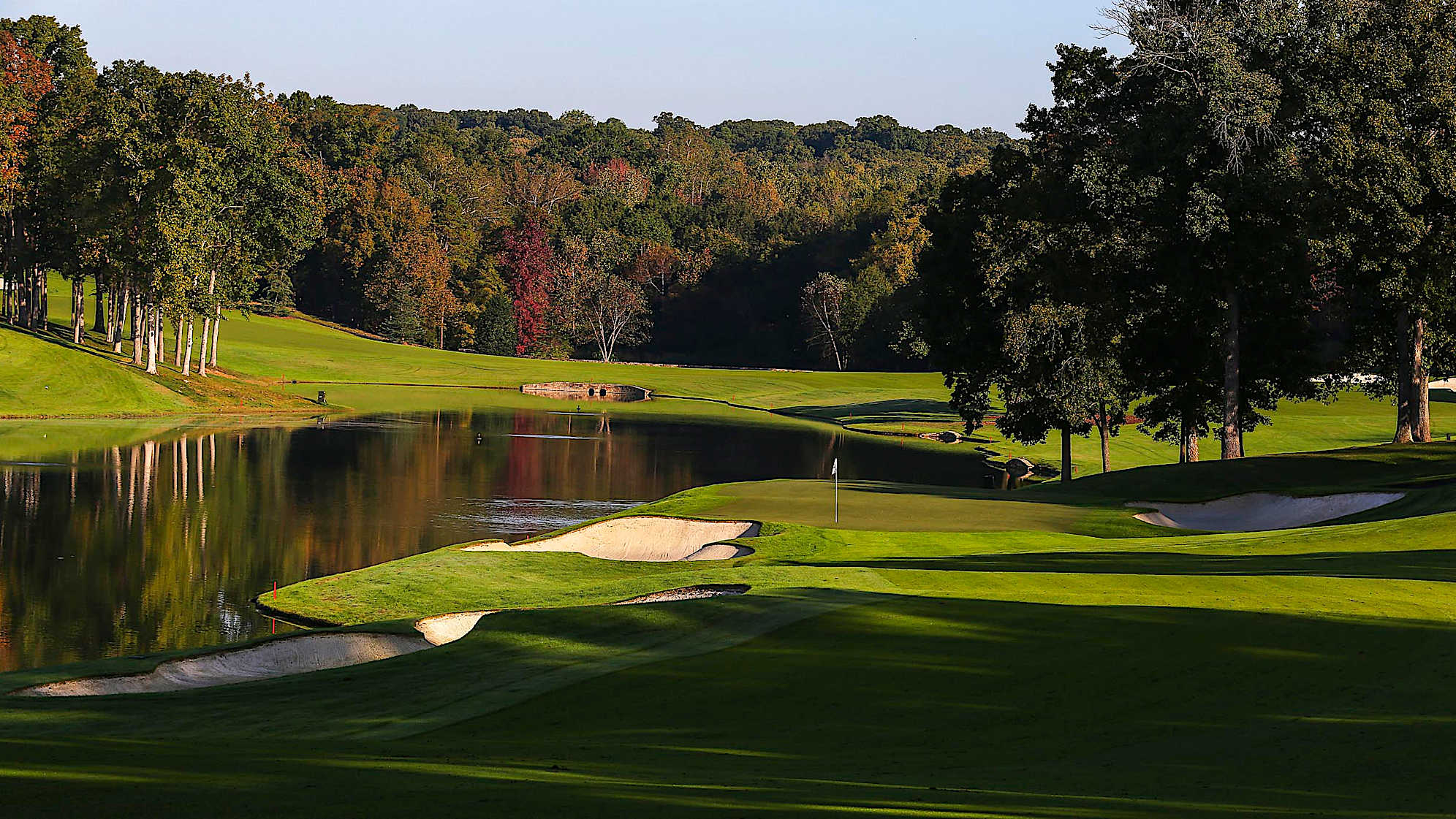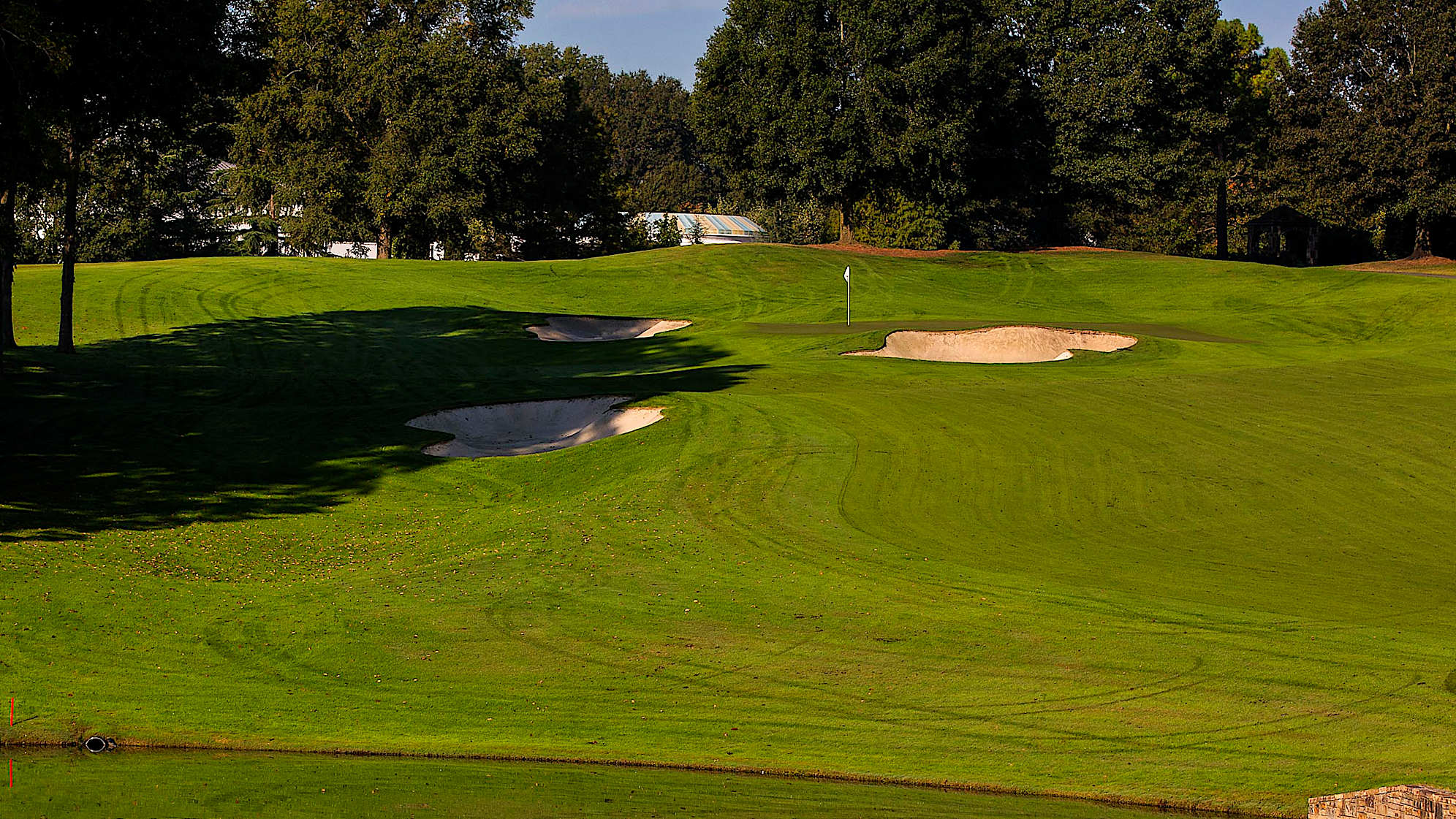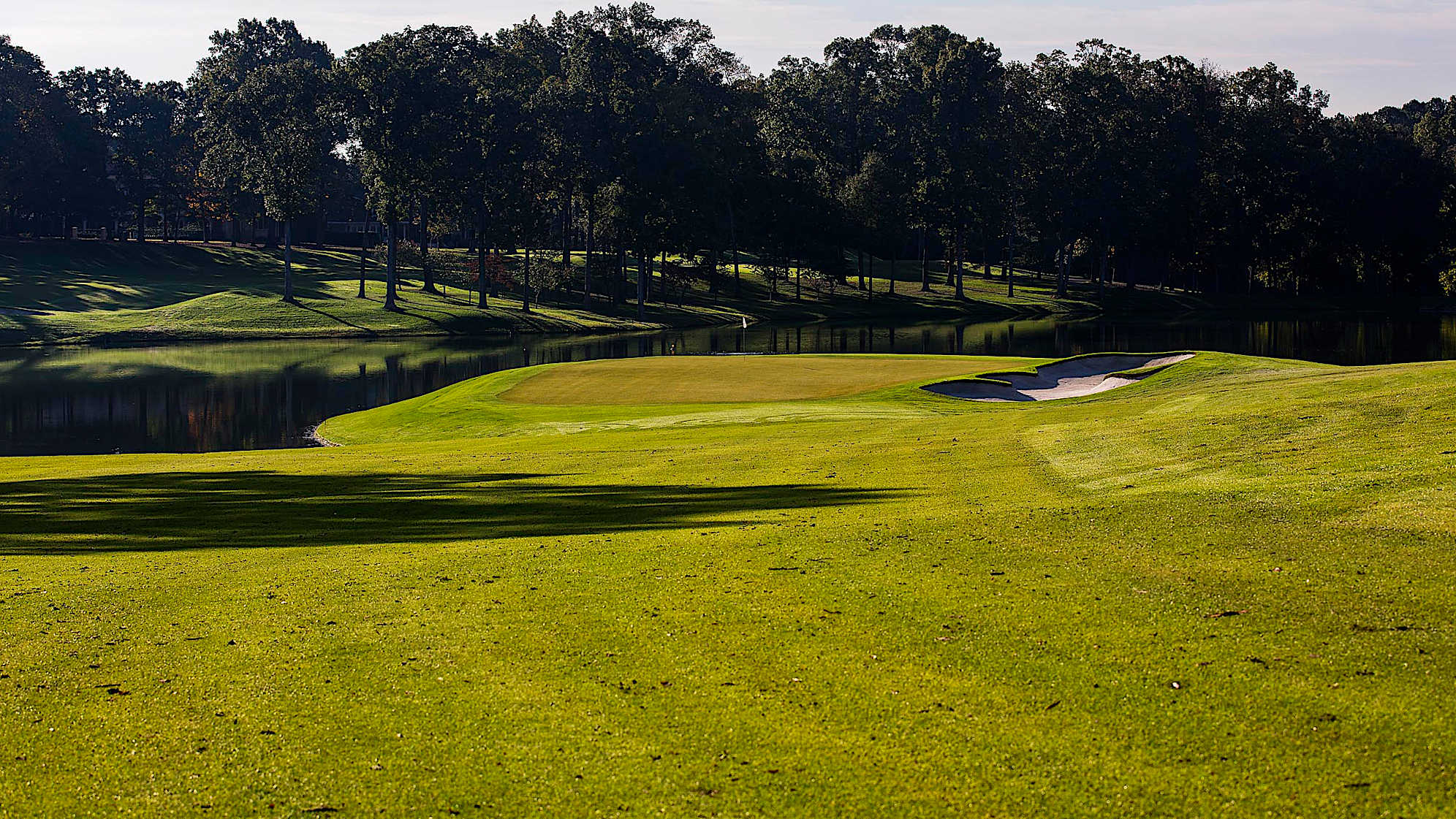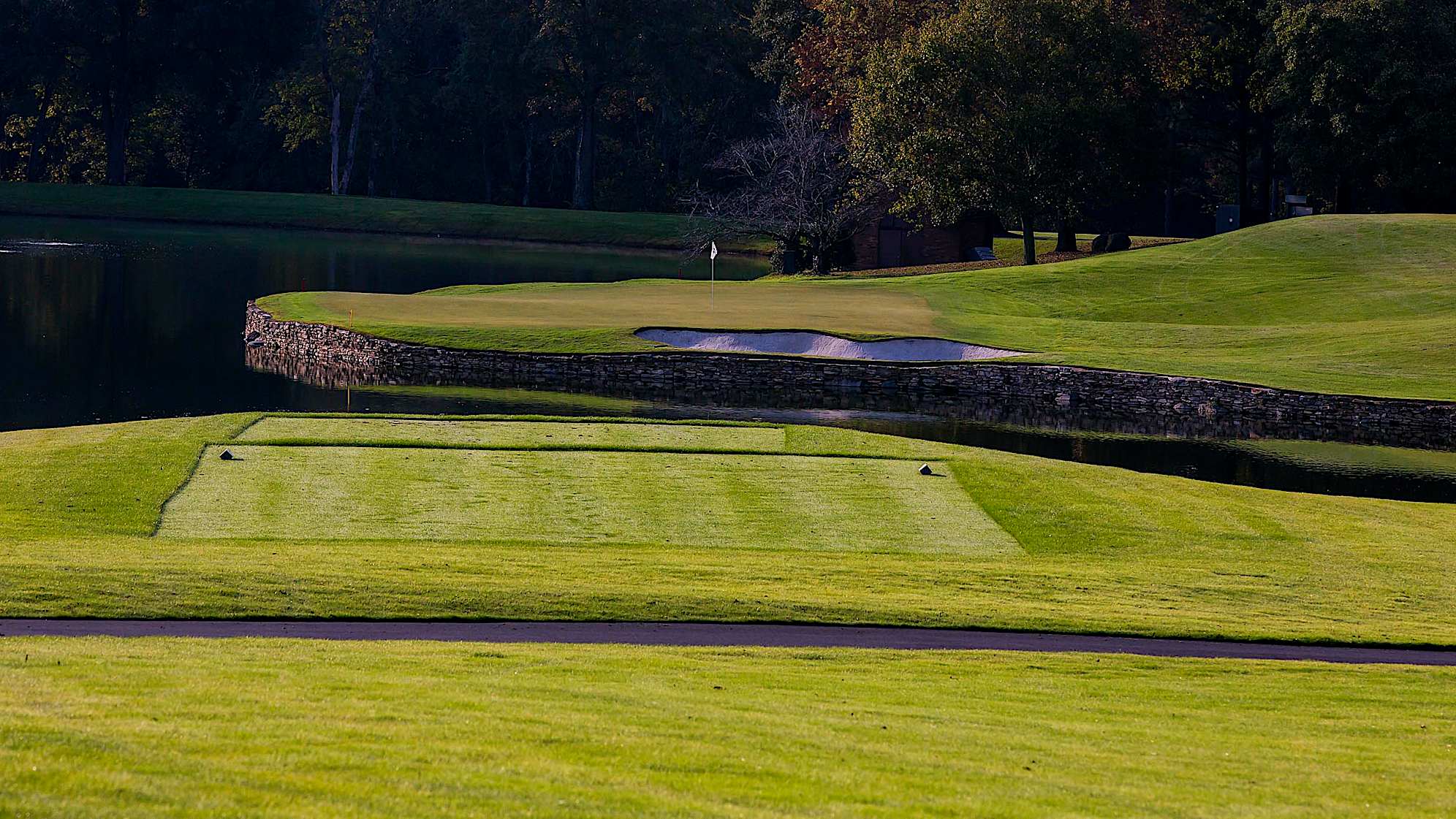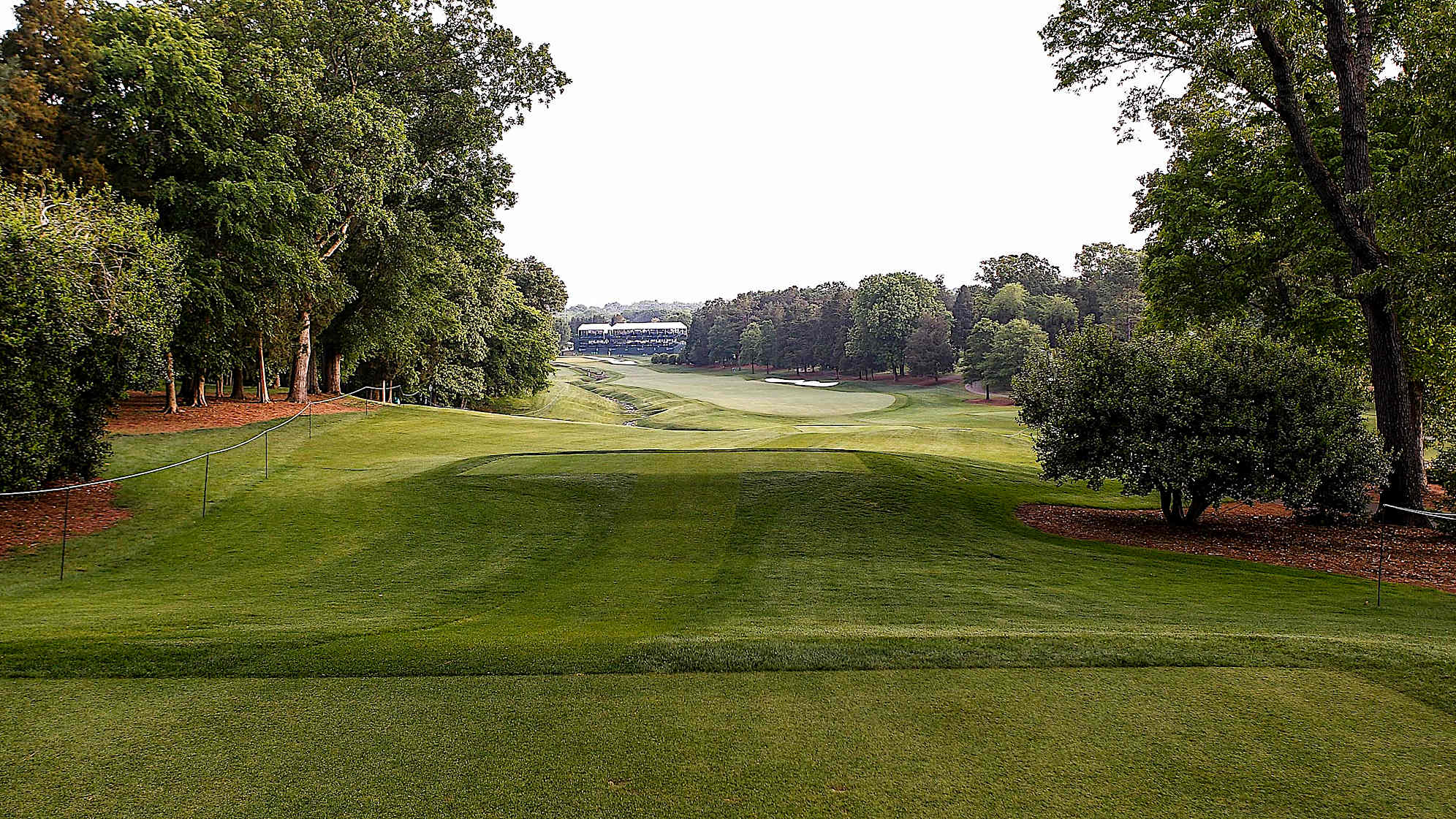Nine things to know about Quail Hollow Club, site of the 107th PGA Championship
9 Min Read

Rory McIlroy dominates at Quail Hollow Club at 2024 Truist
Written by Bradley S. Klein
The 107th PGA Championship is back in North Carolina for just the fourth time in its history, though it’s set up at a familiar venue.
Unlike with Pinehurst No. 2 in 1936 and Tanglewood Park in Clemmons in 1974, Quail Hollow Club in Charlotte is a regular PGA TOUR stop. It also hosted the 99th PGA Championship in 2017.
The George Cobb design is well known to many of the 156 contestants, with the notable exception being most of the 20 club professionals who qualified via their performance in the 2025 PGA Professional Championship. That will create familiar drama with an added layer of history with which to follow the tournament.
Ahead of this year’s PGA Championship, here are nine things to know about Quail Hollow.
1. Club profile
Quail Hollow dates back to 1959, when 21 Charlotte-area businessmen led by James J. Harris (father of current club president Johnny Harris) committed to founding the club. A sprawling white Southern-style clubhouse presides over the grounds and provides a gracious overlook of the golf course, which opened for play in 1961.
The club is one of Charlotte’s premier golf and recreational facilities. It occupies a 257-acre woodland site, only seven miles south of downtown and nine miles southeast of the region’s international airport. Though situated in a residential community, there are no homesites on the premises and only lightly on the perimeter.
2. Design history
The original course design was the handiwork of George Cobb. At the time, he was one of the South’s leading golf architects and worked in the tradition of design industry leaders Robert Trent Jones Sr. and Dick Wilson.
For Quail Hollow, that meant big, bold, flowing features that sat atop the rolling land. It also entailed tree-lined fairways, flashed up bunkering and aerial carries onto raised putting surfaces.
Arnold Palmer altered four holes in 1985, but it was up to the design team of Tom Fazio, starting in 1995, to give Quail Hollow its contemporary championship structure.
Along with Quail Hollow, Cobb might be most known for his consulting work at Augusta National Golf Club, including the design of the nine-hole par-3 course.
3. Classic parkland
Over the last 30 years, the course has taken on the guise of North Carolina’s version of Augusta National. The core routing, with the front nine to the upland west and the back nine on the lower land to the east, has a clarity of purpose and landscape identity that makes it among the memorable icons of Southern golf.
The property tumbles 80 feet from its high point at the clubhouse down to a creek at the lower end by the 12th and 13th holes. The front nine has water on one hole, the par-5 seventh, while water (and thus considerable drama) comes into play on five holes of the back nine that amble around a vast (unnamed) lake and comprise the finishing stretch from the 14th hole in.
4. Kemper Open, 1969-79
Quail Hollow became a popular PGA TOUR stop in 1969 with the advent of the Kemper Open. The event, held in late May/early June in between a stopover in Atlanta and the U.S. Open, drew a strong field due to its then-enormous total purse – $150,000 in the first years, ultimately increasing to an eye-popping $250,000 total by 1974. The list of winners there attests to the diverse skills needed to play well, from short-hitting Dale Douglass (1969), Bob Menne (1974), Joe Inman (1976) and Jerry McGee (1979) to bombers like Tom Weiskopf (1971, 1973, 1977) and Andy Bean (1978).
Weiskopf’s win in 1973 at Quail Hollow came in the middle of a torrid, career-defining streak in which he won five times over three months, including wins at Colonial, the IVB-Philadelphia Golf Classic, The Open Championship and the Canadian Open.
5. Truist Championship, 2003-2024
Following major upgrades to the course and securing new corporate sponsorship, PGA TOUR golf returned to Quail Hollow in 2003 under various guises: Wachovia Championship (2003-2008), Quail Hollow Championship (2009-2010), Wells Fargo Championship (2011-2024) and starting in 2026, Truist Championship (the 2025 Truist Championship was hosted at Philadelphia Cricket Club as Quail Hollow prepared to host this week’s PGA Championship).
Regardless of the name, the event has provided stirring finishes, in large part due to the dramatic and often nerve-racking demands of its finishing holes. In 2003, David Toms infamously came to the 72nd hole with a six-shot lead and managed to win for the first time in 42 starts despite making a quadruple-bogey 8 without even hitting the ball into the hazardous creek down the left side.
Anthony Kim had his breakthrough win at Quail Hollow in 2008. So did a 21-year-old Northern Irishman named Rory McIlroy in 2010, only to reprise that win in 2015, 2021 and 2024. Wyndham Clark’s inaugural victory in 2023 presaged a dominant mid-season stretch that included his winning the U.S. Open six weeks later.

Rory McIlroy charges to victory at Truist
6. 2017 PGA and 2022 Presidents Cup
The final round of the 99th PGA Championship in 2017 saw five players jockeying for the lead, including one point when third-round leader Kevin Kisner was tied with Hideki Matsuyama, Chris Stroud, Francesco Molinari and Justin Thomas at 7 under. A chip-in birdie on the par-3 13th hole and a 14-foot birdie putt on the par-3 17th gave Thomas the clear lead, enabling him enough of a margin to bogey the 18th and still claim a two-shot win for his first major championship.
At the 2022 Presidents Cup, pitting 12-man teams from the U.S. against the Internationals, Quail Hollow vindicated itself as a match-play test. Runaway wins were rare, with 12 of 30 matches going to the 18th hole – an uncommonly high rate for such a contest. The U.S. ultimately prevailed, 17.5 to 12.5, winning the event for the ninth consecutive time.
7. Course character
Quail Hollow is a big layout, characteristic of a modern style of aerial, power golf. Its 26 acres of fairway require accuracy off the tee, with stray shots wandering quickly into trees and thus punishing wayward driving with very awkward recovery shots. The greens are on the larger size for championship golf, averaging 6,600 square feet. High performance in reaching greens in regulation will not, of itself, lead to low scoring unless the approach shots end up on the near side of the hole. It’s easy to face one of those dicey up-and-over long putts on these greens, especially with them running at 12 to 12.5 on the Stimpmeter.
8. Early holes to watch
Hole No. 1, par 4, 505 yards
No. 1 is quite the wake-up call – a long par 4 sweeping right, falling 35 feet from tee to green. A succession of bunkers protects the outside of the dogleg and calls for a very light fade, perhaps with a 3-wood instead of a driver. There is no need to protect the inside of the turn with sand – dense woods do that, ensuring that a tee shot blocked right or that doesn’t make the turn point 290 yards from the tee in the fairway leaves an obstructed second shot to the green below.
Hole No. 7, par 5, 546 yards
Threading the needle off the tee at No. 7 is crucial on this classic risk/reward, short par 5. The drive landing area is very tight, thanks to a creek five yards off the fairway on the right side and a pair of deep bunkers down the left side from 285 to 340 yards off the tee. With the prevailing wind over the left shoulder on the tee, players could opt for a metal club on the drive to play it safe without sacrificing much yardage. The green is the most profoundly defended on the course, with bunkers short and left, a pond front-right and a creek on that side, towards which the putting surface tilts noticeably. The hole demands more finesse than modern firepower and that will yield eagles and a nearly corresponding count of bogeys and worse through the week.
Hole No. 8, par 4, 346 yards
No. 8 is a short par 4, reachable off the tee for the very longest hitters, to the smallest green on the course. The putting surface is only 4,850 square feet, yet is sectioned off into five distinct pods such that any approach shot not hit within immediate proximity faces a delicate up-and-over approach putt. Dense fairway bunkering from 260 to 320 yards off the tee means that even a lay-up shot will require care. At least one round for the week, probably during the weekend, PGA Championship set-up officials will move the markers up and make the hole reachable in one for all players in the field.
9. That “Green Mile” finish
Okay, technically the last three holes are only seven-tenths of a mile, but they still make for a helluva finishing stretch. (Note to Quail Hollow officials: Just add the 577-yard 15th hole to the mix and it then becomes a full mile.)
Hole No. 16, par 4, 529 yards
A new back tee, adding 20 yards, will make this already difficult long par 4 even more demanding. The hole tumbles 50 feet from the tee to the peninsula green, with water looming behind and to the left. Good thing that at 7,840 square feet, it’s the largest putting surface on the course. It needs to be to allow approach shots to run out before they overshoot the surface.
Hole No. 17, par 3, 223 yards
This mid-iron par 3 makes for great theater, given the threat of water in front of the green as well as long and left. The tee is 17 feet above the green. That is enough to make any wind a considerable factor. As great as these golfers are, they are also human and thus occasionally defensive in their play, which is why a lot of tee shots end up right of the putting surface, often on a downslope that leaves a delicate recovery to a green where water looms on the far side.
Hole No. 18, par 4, 494 yards
No. 18 provides quite the testing finish, from an elevated tee, 14 feet above the landing area and then back up the same height to the green. A creek runs the length of the hole down the left side, only a few yards off the fairway and only a few feet off the green.
The hole might best be remembered for Toms’ winning with that 8 in 2003 – incurred here without help from a penalty shot. But the hole has also seen its moments of redemption, arguably none more inspiring than McIlroy in 2010, capping off his final round 62 with a 40-foot birdie putt that sealed an amazing closing run of six consecutive 3s.
Quail Hollow Club, Charlotte, N.C.
Card of the Course
| Hole | Par | Yardage |
| 1 | 4 | 505 |
| 2 | 4 | 452 |
| 3 | 4 | 483 |
| 4 | 3 | 184 |
| 5 | 4 | 449 |
| 6 | 3 | 249 |
| 7 | 5 | 546 |
| 8 | 4 | 346 |
| 9 | 4 | 530 |
| out | 35 | 3,744 |
| 10 | 5 | 592 |
| 11 | 4 | 462 |
| 12 | 4 | 456 |
| 13 | 3 | 205 |
| 14 | 4 | 344 |
| 15 | 5 | 577 |
| 16 | 4 | 529 |
| 17 | 3 | 223 |
| 18 | 4 | 494 |
| in | 36 | 3,882 |
| 71 | 7.626 |









